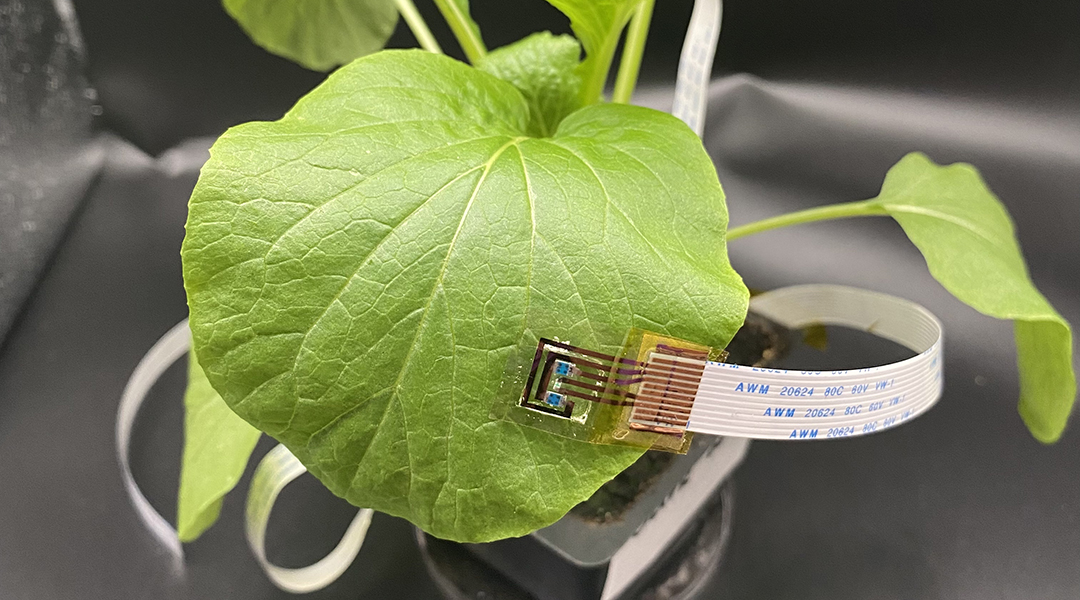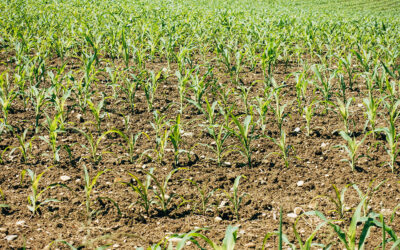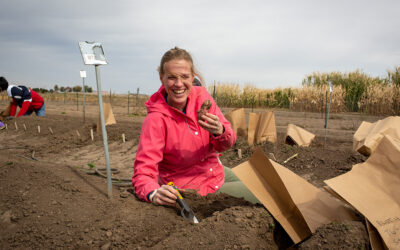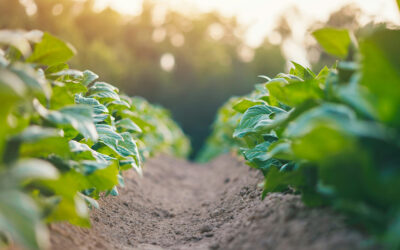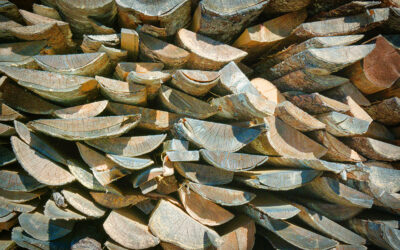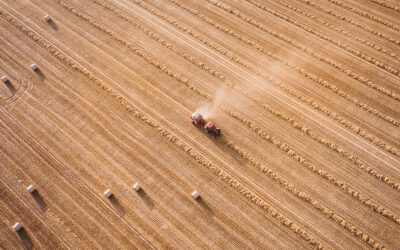As the world population increases, so will the demand for food. By 2050, estimates suggest that food production will have to rise by 60 to 100 % to meet the population´s needs. This productivity upswing, together with a more environmentally conscious society, calls for innovative strategies in crop production.
One such strategy involves early detection of plant stresses using plant-wearable sensors. These high-tech devices monitor vital parameters, like temperature, water status, and hormones emissions, providing real-time information about the health of crops right in the field.
An eye on chlorophyll
A key molecule for photosynthesis and plant growth, chlorophyll is an important target to monitor as, in simple terms, it collects light to convert water and carbon dioxide into sugar for energy and to build new plant structural components.
“Chlorophyll levels correlate to photosynthetic capacity and productivity. Environmental stresses, plant senescence, [and pathogens] also influence the chlorophyll content, so chlorophyll levels can also be a key indicator of plant health, ” explained Xiaodong Chen, professor in Materials, Science and Engineering at Nanyang Technological University.
Current chlorophyll sensors do a decent job of determining chlorophyll content on-site, rapidly, and without causing damage to plants. However, their bulky components make them unsuitable for continuous monitoring and since their operation is user-dependent, this creates inconsistent and bias measurements.
This namely occurs as the operator has to manipulate and hold the sensor for each determination, which means the angle of the incident light can change. It’s also difficult to take measurements in the exact same place, contributing to variation between measurements.
Committed to solving these limitations, a team of researchers at the Innovative Center for Flexible Devices in Nanyang Technological University and the Institute of Materials Research and Engineering in Singapore, led by Chen, has developed an upgraded chlorophyll sensor. With a weight of only 0.2 grams, the sensor can be attached to the leaf surface and left for continuous and more precise monitoring.
Behind the setup
Unlike existing chlorophyll sensors that gauge chlorophyll content by measuring the light it absorbs, Chen and his team chose to measure the light it reflects; this is the light coming back off the plant after having interacted with the chlorophyll inside the leaf
“Both leaf transmittance and reflectance […] are closely related to pigment content. However, using leaf reflectance rather than transmittance facilitated the design of our chlorophyll meter in a single wearable patch,” explained Chen.
“The sensor employs one green LED and two photodetectors. The LED emits light to the leaf’s upper surface and primarily interacts with the chlorophylls in the leaf,” said Chen. “Subsequently, the photodetectors measure the intensity of the light reflected by the leaf.”
The chlorophyll content is then calculated as the reciprocal of the reflected light, as previous studies demonstrated that leaves with higher chlorophyll content reflect less light.
Completing the sensor´s design, there is a transparent cover encasing the LED and the photodetectors. This cover, known as the light guiding layer, not only protects the delicate components but also plays a crucial role in improving the sensor´s precision.
Improving precision
Key to this is how efficiently the photodetectors collect the reflected light, as any shortfall in light collection can lead to inaccuracies in the chlorophyll content readings.
The team’s approach to enhance light collection relied on using not one but two photodetectors, which separates their sensor from existing commercial meters, according to Chen.
Then, they focused on refining the design of the light-guiding layer, the first structure light encounters as it comes back from the leaf. This is a possible source of error as light naturally deviates with the type and width of material it goes through. The team found that a light-guiding layer with a thickness of 1.5 millimeters provided optimal localization of the rays into the photodetectors.
But a final challenge remained: The irregular surface of leaves and the plain surface of the light-guiding layer favors air trapping between them, which can deviate light or reflect it without entering the leaf, compromising the accuracy of readings. To avoid this, the team chose an adhesive material for the light-guiding layer that firmly attaches to the leaf, eliminating the air gap.
Taking it to the field
Finally, it was time to test the sensor. To do that, the scientists attached it to the model plant Nicotiana benthamiana under dark stress and viral infections, two conditions that affect chlorophyll levels.
The sensor´s performance was impressive. It not only identified drops in chlorophyll levels, but did it earlier and with greater precision than other methods.
The advantage of the new sensor was dramatic for infected plants. It took ten days to detect a stable decrease in chlorophyll content using a classic commercial meter or the visual evaluation of plant yellowing (a typical symptom of chlorophyll loss), while the new sensor did it in just three days.
“This chlorophyll sensing patch provides real-time data […] to optimize the plant growing conditions and detect early signs of unhealthy plants to prevent potential problems, ultimately resulting in higher crop yields, reduced resource wastage and sustainable farming practices,” highlighted Chen.
“[..] Our meter is promising in smart and precision agriculture, but its applications can extend beyond agriculture to benefit gardeners, landscapers, and plant enthusiasts in various contexts,” concluded him.
Reference: Kaiyi Zhang, et al., A Leaf-Patchable Reflectance Meter for In Situ Continuous Monitoring of Chlorophyll Content, Advanced Science (2023), DOI: doi.org/10.1002/advs.202305552

